Avalon now All-American luxury/sport sedan
By John Gilbert
ANN ARBOR, Mich. — During three restyling generations in its 17 years, the Toyota Avalon never distinguished itself as a dazzler, even though it never qualified to be an ugly duckling, either. Its heritage was as an elongated Camry-with-bling, but that image will be shattered forever by the 2013 Avalon, which soars, swan-like, with a combination of stunning attractiveness and breakthrough engineering.
First impression is striking, particularly for a car that began existence in 1995 as the replacement for the brick-shaped Cressida. A case could be made that the new Avalon is the most beautiful sedan ever dreamed up by Toyota, starting with a new grille that has an aggressive look, and with lines that flow front to rear over a low belt-line, meeting at a distinctive rear.
Akio Toyoda, the company’s young and performance-oriented chairman, was reportedly so impressed when he saw the proposed U.S. design that he ordered the car built without changing a thing. It was, even if it meant giving up a couple of inches of rear headroom to accept the sleek roofline.
If this indeed is a standard of design that will influence future Toyota sedans, we can celebrate it for more than just replacing Avalon’s comparatively boring predecessors. Previous Avalons were always competent and pleasant, but stylistically they were ho-hum appliances, just enough to satisfy Camry buyers seeking to move upscale without appearing pretentious by buying a Lexus. Toyota’s upscale Lexus line has redesigned its whole fleet, but the new Avalon gives up nothing to them in design.
Under that shapely body, the Avalon further takes wing by achieving quiet comfort — which is no surprise — complemented by enough handling agility to gain some All-American sportiness — which is.
The Avalon presented an additional challenge because it was the first time allowed any new vehicle to be totally drawn, designed, engineered and built by its expansive U.S. outlets. Instead of being started in Japan, the fourth-generation Avalon was designed by Calty Design in Newport Beach, Calif., and Ann Arbor, Mich., engineered at the Toyota Technical Center in Ann Arbor, and is being built at the Georgetown, Ky., plant.
“Back in the ‘80s, all Toyota vehicles shipped to America were designed, engineered and built in Japan with little or no input from the U.S.,” said Bill Fay, Toyota general manager, tracing the time line of increased building in U.S. facilities. “We’ve just passed a very special milestone for Toyota in the U.S.A. — our Kentucky plant has built our 25 millionth North American vehicle. Over the last 26 years, this represents a direct investment of nearly $24 billion, and the creation of 365,000 jobs in the U.S. But this Avalon is a real game-changer.”
So coordinated is the new Avalon, from design through driving experience, that the question is, what took so long? “It was very hard to make it very easy,” said Joel Fukumoto, product education manager who explains Avalon’s changes to dealers. “We’ve made it more of a driver’s car.”
Upon meeting Fukumoto, I was impressed at how well Toyota had trained its Japanese-heritage ambassador in the English language. Turns out, it came naturally because Fukomoto is a fourth-generation Japanese-American, who grew up in California.
The lowered coefficient of drag (0.28) doesn’t inhibit interior amenities. The interior adds a lot of soft-touch covering over thicker foam, improving quietness and making it nice to touch, for those who fondle their dashboards. Great attention has been paid to hand-stitching the covering over that foam, with leather offered in almond, light grey, or black, which give different personalities to the new instrumentation, which are encased in a new layout that ranges from luxury to sportier. Woodgrain trim is so highly polished we can’t be sure if it’s real or simulated, but you also can choose black.
The Avalon comes in various models, including the XLE, XLE Premium, XLE Touring, and Limited. All are available with the standard 3.5-liter V6, with its 268 horsepower and 248 foot-pounds of torque, which is expected to account for 80 percent of Avalon sales. The familiar V6 connects to a 6-speed automatic transmission with manual override on the shift lever’s gate, and both the Touring and Limited models offer a Sport model, which adds thumb shift paddles on the steering wheel for upshifting and downshifting to a slightly tweaked version of the revised suspension and tighter steering to give the Avalon surprisingly sporty stability. That means it doesn’t lean much in turns, even though it doesn’t give up the luxurious ride previous Avalon buyers might expect.
The top three Avalon models — Touring, Premium or Limited — are also available in Hybrid form, which boosts fuel-economy potential from the V6‘s 26 city/31 highway miles per gallon to 40/39 mpg. The Hybrid is an entirely different breed of Avalon, using the tried and true system from the Camry Hybrid. The front-wheel-drive vehicle has a sophisticated 2.5-liter 4-cylinder engine with variable valve-timing and Atkinson cycle valve-overlap is hiked from 156 to 200 horsepower when combined with the two-motor electric motors and their trunk-mounted Nickel metal-hydride battery pack, which has 204 cells in 34 modules, producing 244.8 volts.
The hybrid transaxle acts as a power split between the gas engine and the two electric motors. It feels like a CVT, but has planetary gears for switching or combining power sources. In EV mode, the Avalon Hybrid can run for as much as one mile at speeds up to 20 mph on pure electric power.
Prices range from $30,990 for the XLE up to $39,650 for the Limited, with Hybrid prices ranging from $35,555 for the XLE Premium Hybrid up to $41,400 for the Limited Hybrid. Fuel economy figures for the V6 are 21 city and 31 highway miles per gallon, while the Hybrid figures are 40 mpg city, 39 highway.
While expanding exports of Kentucky-built Avalons to the Mideast and Korea, Toyota officials say there is no intention of trying to invade the German/European market, even though driving the car conjures up comparisons to up-level German autobahn cruisers.
We weren’t on an autobahn, of course, but as a group of Midwestern automotive journalists, we did drive assorted Avalons to Hell and back. That’s Hell, Michigan, a tiny town north of Ann Arbor that is only reached by covering a series of rural roadways that offer a few turns, a few bumps, and basically all the things an autobahn doesn’t offer. There were enough variations in terrain to prove to us that the new Avalon is tight, quiet, with more than sufficient power, and excellent compromises in both firm handling and precise steering feel.
Chris Dragan, chassis and suspension engineer at Toyota’s Saline, Mich., engineering and manufacturing facility, described the improvement in function and feel, which starts with structural reinforcement that stiffens the rear end by 23 percent over its predecessor.
“Randy Stephens is the first American chassis engineer in charge of a new model, and he did a great job,” said Dragan. “We have revised the rear trapezoidal suspension geometry, and the new coil springs and shock absorbers have higher damping, so the car doesn’t pitch going around curves. We also have solid front and rear stabilizer bars, and the whole package is 25 percent stiffer than an XLE Camry. When you go over bumps, you feel it, but they are damped, but not harsh.
“Along with the improved stability, you have to be able to go straight, so we concentrated to improve the on-center precision and to give the steering a predictable feel. Our development engineers had painstaking attention to detail to give reduced power-steering effort when needed, but with steering effort that builds with speed. So the twitchiness that often is found with electric power steering is not there. The agility and precision of the new Avalon gives it a different flavor of ride quality, and that’s the direction Toyota wants to go.”
Every manufacturer praises each new development, and often the hyperbole sets a standard the car itself can’t attain. But with the new Avalon, Dragan’s explanation tells exactly why a premium midsize, luxury-oriented sedan that used to be softly comfortable and boring to drive is now firmly comfortable, and never harsh. Even though it’s long, at 195.4 inches, it has less overhang on its 111-inch wheelbase, and its stability is aided by 72.3-inch width, while its sleekness reflects the lower 57.5-inch height.
Front seat comfort is assured with wider and better-bolstered bucket seats, although if they are moved all the way rearward, there isn’t a lot of rear knee-room, although if the seats are at normal distance from the steering wheel, you find excellent room, once you duck under the lower roof. And Avalon comfort has never come in such an attractive package.
Instead of being a niche car, squeezed in between the top Camry line and the entry level Lexus, the new Avalon stakes out new turf of its own by handling and steering more like a sports sedan than any sedan previously wearing the Toyota emblem.
Comments
Tell me what you're thinking...
and oh, if you want a pic to show with your comment, go get a gravatar!



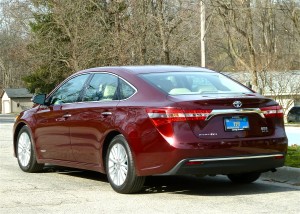
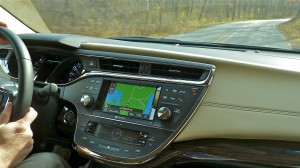
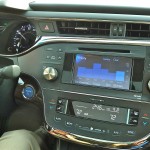
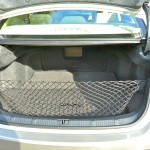
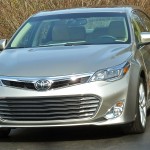
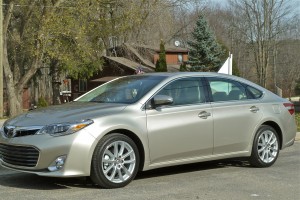
 John Gilbert is a lifetime Minnesotan and career journalist, specializing in cars and sports during and since spending 30 years at the Minneapolis Tribune, now the Star Tribune. More recently, he has continued translating the high-tech world of autos and sharing his passionate insights as a freelance writer/photographer/broadcaster. A member of the prestigious North American Car and Truck of the Year jury since 1993. John can be heard Monday-Friday from 9-11am on 610 KDAL(www.kdal610.com) on the "John Gilbert Show," and writes a column in the Duluth Reader.
John Gilbert is a lifetime Minnesotan and career journalist, specializing in cars and sports during and since spending 30 years at the Minneapolis Tribune, now the Star Tribune. More recently, he has continued translating the high-tech world of autos and sharing his passionate insights as a freelance writer/photographer/broadcaster. A member of the prestigious North American Car and Truck of the Year jury since 1993. John can be heard Monday-Friday from 9-11am on 610 KDAL(www.kdal610.com) on the "John Gilbert Show," and writes a column in the Duluth Reader.